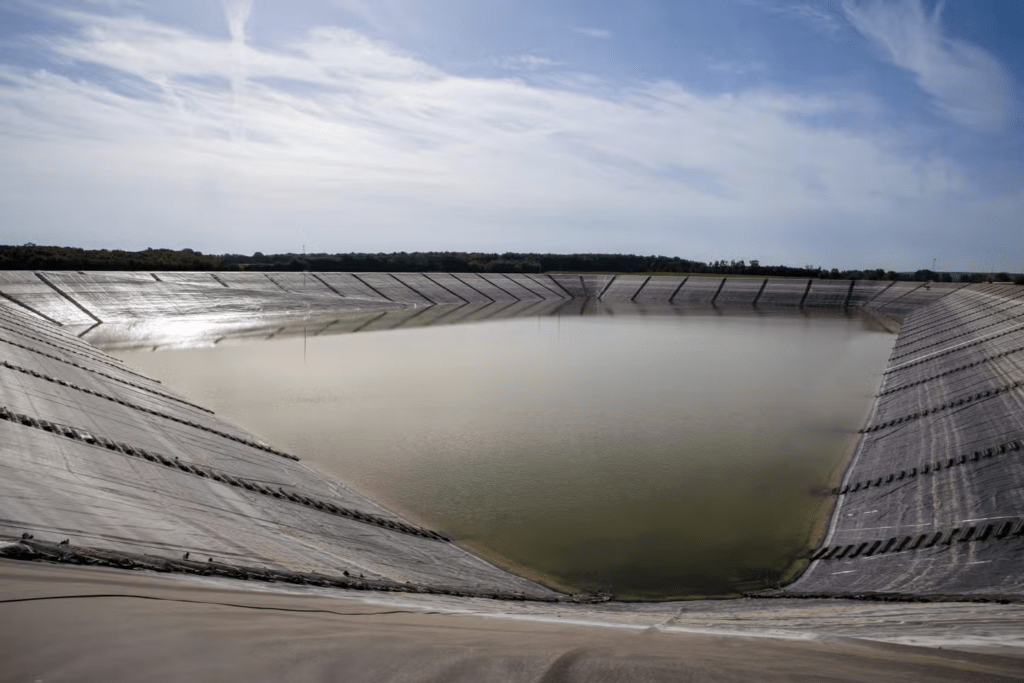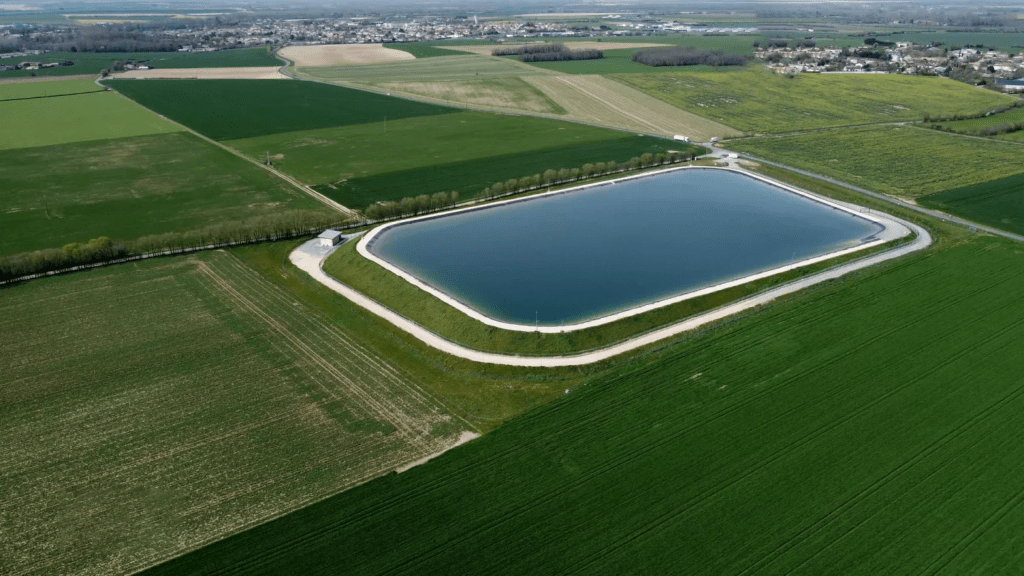As climate change continues to escalate, so does the global demand for water—especially in agriculture, where consistent access to water is essential for crop survival and productivity. In response, some regions have turned to megabasins, large-scale reservoirs that capture and store water during the rainy season, ensuring a backup supply during dry periods. These massive reservoirs have the potential to address immediate water shortages, but their long-term effectiveness and environmental sustainability are hotly debated.
The Promise of Megabasins
Supporters of megabasins highlight several key benefits. Firstly, megabasins increase water security for agricultural sectors, providing a reliable source of water even through extended droughts. They can also serve as a form of flood control, capturing excess water that might otherwise lead to flooding. Additionally, a stable water source can enhance agricultural productivity by giving farmers more predictable access to irrigation, which is particularly valuable as climate instability affects seasonal rainfall patterns.

Environmental Concerns
Despite these advantages, the environmental implications of megabasins raise critical questions. Constructing a megabasin disrupts natural water cycles, potentially affecting downstream ecosystems and interrupting groundwater recharge. This can have cascading effects on biodiversity and local habitats. The expansive surface area of these reservoirs also leads to increased evaporation, potentially diminishing their long-term water retention. Over time, sedimentation can further reduce the storage capacity and water quality of these basins, necessitating costly dredging or other maintenance measures.
Social and Economic Implications
The social and economic impacts of megabasins are profound and multifaceted, affecting local communities, taxpayers, and the broader water ecosystem. These large-scale projects often require the acquisition of extensive land areas, sometimes leading to the displacement of local residents and disruption of communities that depend on nearby water sources and ecosystems for their livelihoods. The process can strain traditional ways of life, especially for communities with longstanding cultural and economic ties to the land and water, like fishing, farming, and artisanal industries. The loss of land and natural resources also impacts regional biodiversity, altering habitats for plants and wildlife, which further affects local communities who rely on these resources.
The financial costs associated with megabasins are considerable, covering not only construction but ongoing maintenance and management expenses. These costs are frequently shouldered by taxpayers, potentially leading to increased water prices. For lower-income households, these price increases can exacerbate economic inequality, making access to water even more challenging for those already struggling. Additionally, higher costs can place a burden on small farmers who rely on affordable water for their crops, while larger agricultural operations may have more capacity to absorb these expenses.
In some cases, these projects have sparked conflicts over water distribution and control. Competition for limited water resources can intensify tensions among various stakeholders, including farmers, urban residents, and environmentalists. Farmers may prioritize irrigation to sustain crops, while urban areas require water for population needs, and environmental advocates push to protect ecosystems that rely on natural water flows. Without effective governance and conflict-resolution mechanisms, such disputes can become severe, challenging community stability and highlighting the need for a more equitable approach to water allocation.
Alternative Approaches
Given the potential drawbacks of megabasins, other, more sustainable water management practices are gaining attention. Water conservation techniques, such as efficient irrigation systems and drought-resistant crops, can minimize water usage in agriculture. Water recycling involves treating wastewater for reuse, particularly valuable for agricultural and industrial purposes. Rainwater harvesting systems offer another means of capturing seasonal rainfall at a smaller, community scale. Finally, integrated water resource management (IWRM) takes a holistic approach, considering the needs and impacts across all water users, promoting collaboration, and reducing conflict potential.
To create a balanced, sustainable approach to water management with megabasins, several critical considerations must be addressed:
- Adapting to Climate Change: As climate conditions fluctuate, megabasins need resilient designs that support sustainable water management even during severe droughts or unexpected floods. This requires innovative construction methods and dynamic operation protocols that minimize environmental disruption. Engineering solutions might include incorporating buffer zones for natural runoff and adaptable spillways to balance water retention with natural flows, thereby protecting downstream ecosystems and promoting groundwater recharge.
- Incorporating Indigenous Knowledge: Many indigenous communities have practiced sustainable water management for centuries, harmonizing with natural cycles and regional ecology. Their knowledge can inform culturally and environmentally appropriate solutions for water storage. Traditional methods, such as rainwater harvesting and localized water sharing systems, can enhance megabasin projects, making them more suited to specific environments and reducing unintended ecological impacts.
- Strengthening Governance and Public Participation: Transparent, inclusive decision-making is fundamental to addressing water scarcity equitably. Involving all stakeholders—including local communities, environmental groups, agricultural representatives, and government bodies—ensures that diverse interests are considered, and the project benefits are shared. Public participation reduces potential conflicts over resource allocation, as stakeholders can help shape policies on water use, access, and pricing. Accountability measures, such as third-party audits and open forums, can further promote fairness and trust.
- Exploring Complementary Solutions: Megabasins should be part of a broader water conservation and management strategy. By integrating other approaches—such as efficient irrigation techniques, rainwater harvesting, and greywater recycling—regions can build a more resilient water infrastructure that reduces the need for such large-scale interventions. Adopting a portfolio approach to water resources reduces dependency on single solutions, enhancing adaptability across diverse agricultural and urban needs.
In facing the complex challenges of climate change and resource scarcity, a holistic strategy that includes technological, social, and ecological dimensions is essential. Thoughtful, inclusive planning that emphasizes environmental stewardship and social equity can help secure a more sustainable and resilient water future for all.

Conclusion
Megabasins are an intricate and, at times, polarizing approach to water scarcity challenges. While they may offer immediate relief to water-intensive agricultural regions, particularly in drought-prone areas, their broader ecological and social impacts cannot be overlooked. Over time, the construction and maintenance of these large reservoirs may alter landscapes, disrupt ecosystems, and shift local water cycles in ways that are difficult to reverse. The social implications, including the displacement of communities and potential escalation of water conflicts, add further layers of complexity to their use as a viable long-term solution.
A sustainable water management strategy should prioritize a multifaceted approach. This could include the adoption of innovative water conservation techniques, like drip irrigation and soil moisture sensors, alongside smaller-scale rainwater harvesting systems that reduce the need for massive reservoirs. Investment in green infrastructure, such as restoring wetlands and natural water retention areas, can enhance water availability while preserving local ecosystems. Policy shifts to support water recycling, demand management, and incentives for efficient water use in agriculture can further balance immediate needs with long-term sustainability goals.
To truly ensure resilient and equitable water access, decision-makers will need to consider hybrid solutions that combine the utility of megabasins with more adaptable, ecologically sound practices. As climate pressures intensify, these diverse strategies could offer a blueprint for responsible water stewardship, bridging the gap between human needs and environmental preservation.
Related Content
- Megabasins: solution or “insane” response to drought?
- Sahara’s Stunning Transformation: Desert Sands Fill with Water
- MIT Develops Battery-Free Solar Desalination System: A Game-Changer for Clean Water Access
- Global Water Resources Crisis: WMO Report Urges Immediate Action to Combat Climate-Induced Water Shortages
- Green Hydrogen: A Brighter Future Fueled by Sunlight and Water?
- The Water-Powered Car Revolution: A Game-Changer for the Auto Industry and the Environment
- How Climate Change Will Disrupt Water Resources in France
- Adopting System Thinking to Explore Possible Maladaptation
- Megabasins: solution or “insane” response to drought?
- Water ‘mega-basins’ stir up turmoil in western France

